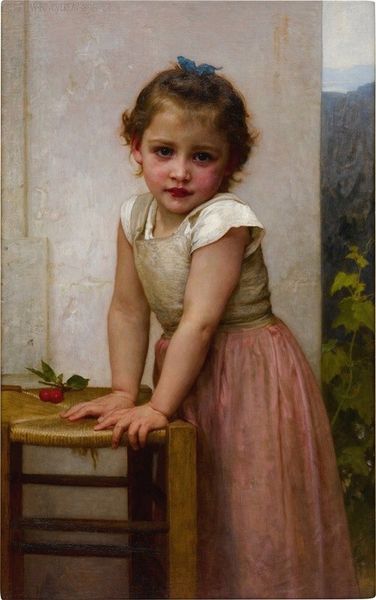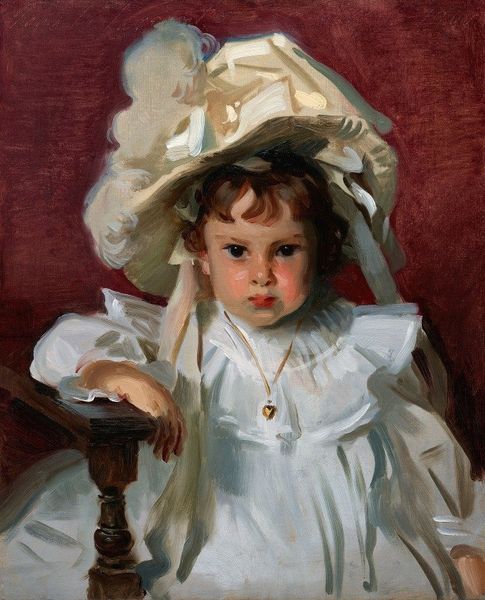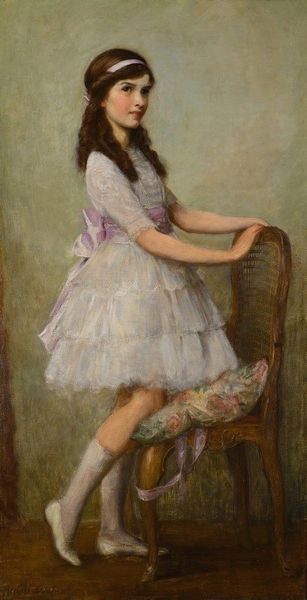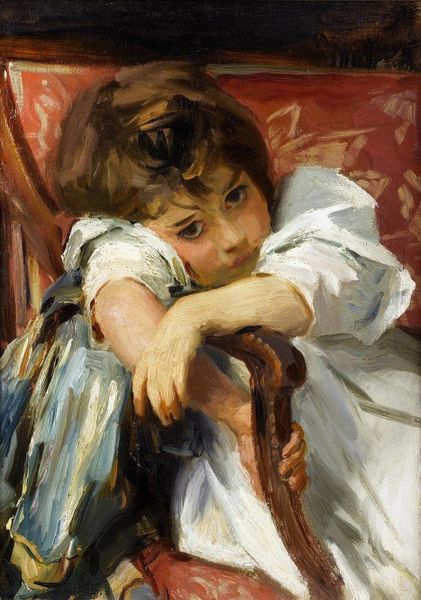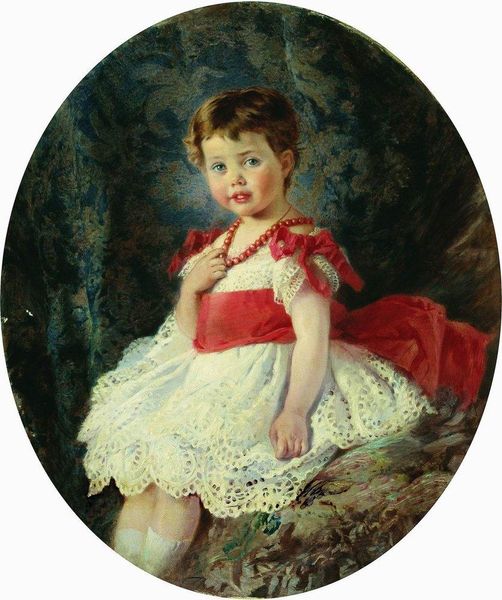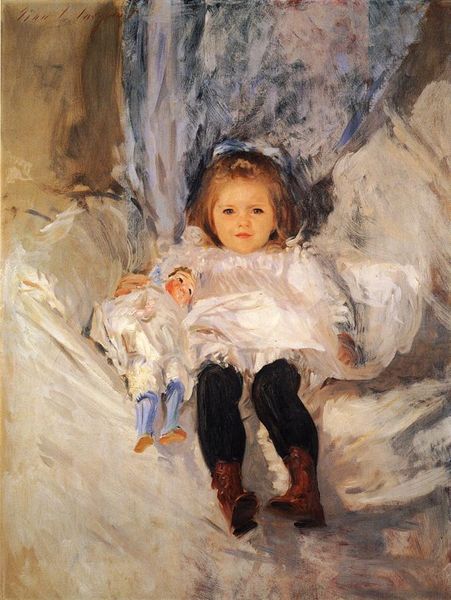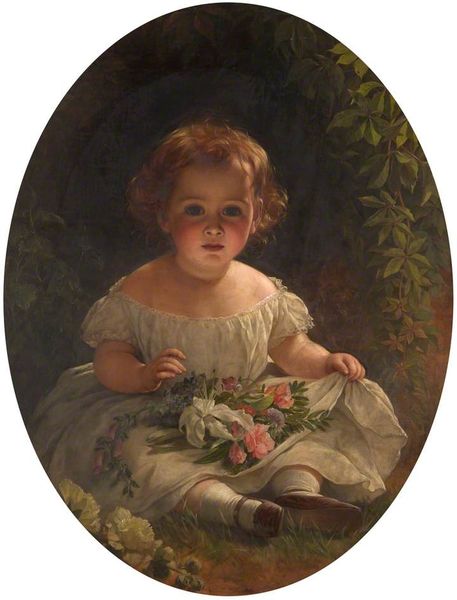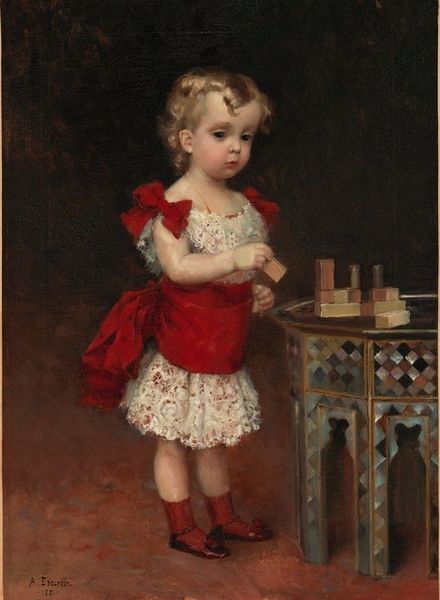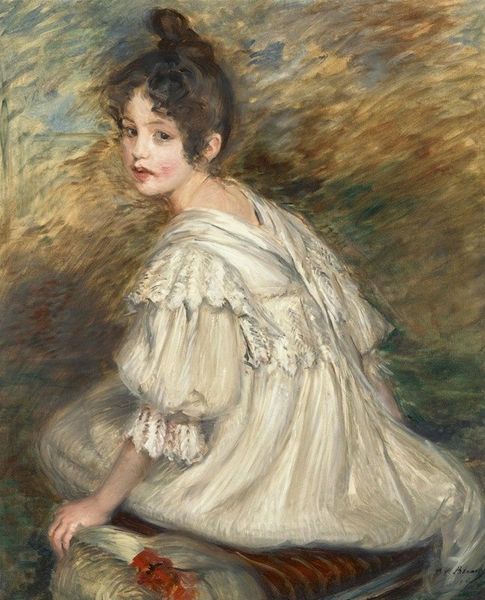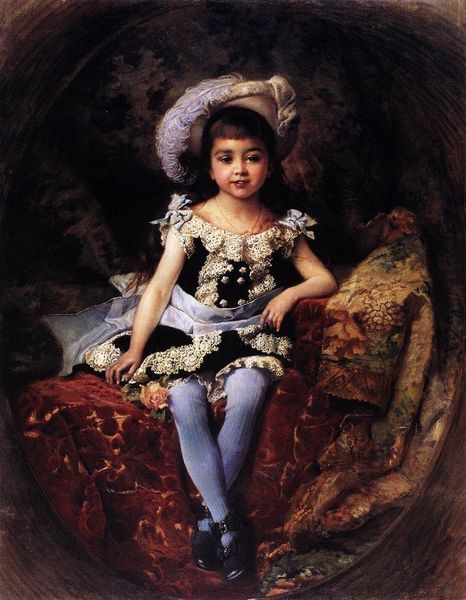
Copyright: Public Domain: Artvee
Editor: This is John Singer Sargent’s “Portrait of Charlotte Cram,” painted around 1900, using oil on canvas. I’m struck by the way the girl is posed so informally in a formal setting. What’s your interpretation? Curator: Well, consider first the tension established between the loose brushstrokes and the implied refinement of the sitter. Sargent expertly contrasts the flowing lines of her dress and hair with the more rigidly defined form of the chair. Do you see how the composition emphasizes these oppositions? Editor: Yes, the vibrant yellows and the textured background also contrast against the smoothness of her face. Curator: Precisely. These juxtapositions reveal Sargent’s careful arrangement. Notice how the chromatic scale reinforces these formal tensions through strategic high-key passages against areas of relatively lower value. The eye traces each tonal divergence from figure to ground. Editor: So, the mood comes less from the subject and more from these arrangements? Curator: Indeed, we are observing an orchestration of shape and colour where meaning is largely derived. Form dictates our response and determines meaning in painting like this, not vice versa. Editor: That makes me look at the composition first, rather than the girl’s expression. I'm learning to see things I had not considered. Curator: As we begin to appreciate the carefully calibrated forms within Sargent's piece, we recognize that they serve purposes beyond mere likeness or surface beauty, even contributing something close to narrative structure when decoded fully.
Comments
No comments
Be the first to comment and join the conversation on the ultimate creative platform.
